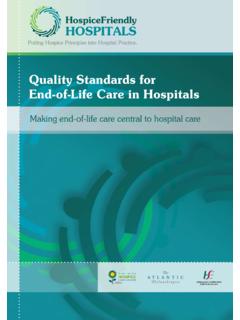Transcription of we help to develop well trained care staff - cis …
1 We help to develop well trained care staffkeeping up the good work a practical guide to implementing continuing professional development in the adult social care workforce2010prefaceI am very pleased to introduce this continuing professional development (CPD) guide for employers and workers in the social care sector. All those involved in transforming the social care workforce know that the continuing development of the sector s workers beyond their induction, initial training and qualifications is an area of crucial importance for social care organisations, their workers and people who use guide defines CPD as an ongoing, planned and developmental process that contributes to work-based and personal development.
2 It enables workers to expand and fulfil their potential, and it ensures continuing confidence and competence, particularly in ever-changing environments. And that means better quality experiences for people who use CPD guide applies to all workers and managers in adult social care . It reflects a development model which values and promotes greater recognition of all roles within social care , paid and unpaid, and which enables flexible career care employers increasingly have to compete to recruit and retain high quality workers, and CPD opportunities are a key reason for any discerning worker s choice of sector or organisation. Having a stable staff group enables continuity of service during periods of change and avoids the spiral of low morale in which staff churn affects workers self worth and quality of service.
3 Offering the right CPD is therefore key to attracting and keeping staff , and helping them value the work they do a principal reason for being a social care worker, according to Skills for care s therefore commend this guide to the sector. Skills for care will continue to support employers and workers to turn this guide into practical David Croisdale-Appleby, OBEI ndependent Chair, Skills for care acknowledgementsSkills for care is pleased to acknowledge the work of David Leay in researching and writing this guide. In the course of that work he drew in particular on the 2006 CPD strategy, framework and employer guide published by Skills for care and the Children s Workforce Development Council, which had been researched and written by Fran McDonnell and Harry for care wishes also to thank all those organisations which provided the case studies and examples of CPD processes which feature in this publication.
4 They are named at their various Up The Good Work a practical guide to implementing continuing professional development in the adult social care workforcePublished by Skills for care , West Gate, 6 Grace Street, Leeds LS1 2RP Skills for care 2010 Copies of this work may be made for non-commercial distribution to aid social care workforce development. Any other copying requires the permission of Skills for for care is the employer-led strategic body for workforce development in social care for adults in England. It is part of the sector skills council, Skills for care and work was researched and written by David Leay, working to a commission from Skills for reference data for Harvard-style author/date referencing system:Short reference: SfC 2010 Long reference: Skills for care , Keeping Up The Good Work a practical guide to implementing continuing professional development in the adult social care workforce, (Leeds, 2010) A.
5 An overview of continuing professional development (CPD) Context for developing Understanding CPD The CPD CPD CPD for social Obstacles and how to overcome barriers to Evaluating CPD Implications of CPD for individual Recruitment, retention and career pathwayspart B: useful CPD tools 11 Template 1: The worker s CPD progress recordTemplate 2: The employer s CPD summaryTemplate 3: Annual performance appraisal and development programme (PADP) guidance and recordpart C: examples of good CPD practice 12C1 Whole system human resources practices that support CPD planning and developmentC2 Case studies related to particular areas of The development of personal Supporting the needs of migrant Induction Management development Systems to record the CPD processpart D: resources 26appendix: developing yourself introduction This guide replaces the Skills for care CPD materials originally published in 2006.
6 It provides clear information on the importance and practicalities of effective continuing professional development (CPD) for adult social care workers. CPD can be defined as planned learning and development activity that develops, maintains or extends knowledge, skills, understanding or performance. It can include a wide range of activity designed to equip a worker to provide quality social care and/or to support their career development. It is relevant to workers in organisations of all types and sizes, including micro employers and those who manage their own CPD contributes to: improved outcomes for people who use services services that are flexible, responsive to changing requirements and that use resources effectively organisations meeting relevant standards and requirements workers being equipped to undertake both current and future roles workers having improved competence, confidence and self-esteem workers expanding and fulfilling their potential a more qualified workforce the development of a learning culture better recruitment and A.
7 An overview of continuing professional development (CPD)CPD is therefore: central to developing and improving services essential for good people management key to improving recruitment and retention applicable to all workers, volunteers and managers a shared responsibility between workers, managers and context for developing CPDO ngoing changes to the world of adult social care highlight the need for a workforce that is flexible and equipped to meet the ever-increasing challenges involved in providing personalised services. This includes the growth in the number of micro employers and people managing their own services. Significant efforts have been made to harmonise various initiatives and policy developments with improved outcomes for the people who use them.
8 These stress the importance of CPD in bringing about the changes required and in supporting the drive for consistently high quality services with improved outcomes for the people who use for care remains committed to a whole systems approach to sector-wide implementation of CPD. This integrated approach takes account of key stakeholders and recognises that a number of different elements need to come together for successful implementation. The following diagram shows the application of a whole systems model to the CPD understanding CPD planningStarting with induction, workers need to undertake learning and development activities that give them the required knowledge, skill and understanding for specific roles and tasks.
9 However, these requirements are not fixed or static and, inevitably, over time, organisations need workers to do things differently or to do different things, thereby creating additional learning and development requirements. Organisations also need to be mindful of the potential of each worker to grow beyond their current role. Workers will have aspirations that may not always be consistent with their organisation s thinking and the drafting of a CPD plan that satisfies both parties will therefore usually be a matter for negotiation. Such a plan is best developed, monitored and reviewed as part of ongoing performance management arrangements. Typically, performance management involves: an annual cycle of objective-setting and appraisal including learning and development planning and review with a formal mid-year review/update and integrated with regular supervision meetings.
10 2 Further information on performance management and appraisal systems can be found at organisations have well-established supervision and appraisal schemes in place that include learning and development plans. Positive examples are included in part C of this document. CPD planning is also part of the wider workforce planning process that all social care employers need to engage in to ensure that they have the right people with the right skills who can produce positive outcomes for people who use services. Wider workforce planning includes: effective recruitment and retention practices the use of organisational learning and development plans. Further guidance on developing these is available in the 2010 Skills for care publications: Finders, Keepers: the adult social care recruitment and retention toolkit and Taking Steps.








